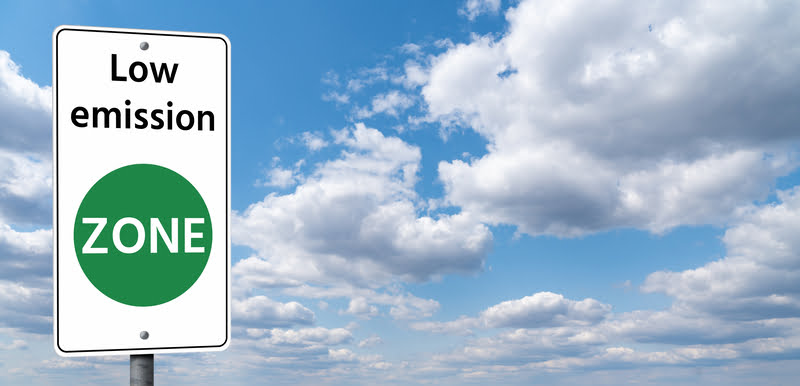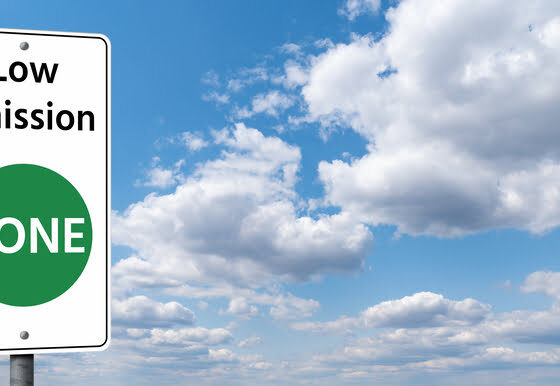

Energy
Low Emission and Clean Air Zones: What You Need To Know
Pollution has become a major issue over the last few decades as advocates for a society fueled on something other than petrol became more and more common. Today, most people are familiar with Low Emission Zones (LEZ), where vehicles that produce the most pollution are either forbidden or required to pay large fees to be able to drive.
What exactly are low emission zones, and how are they affecting the drivable world for motorcyclists and scooter enthusiasts across the country? Learn more about the specifics of these zones, how the rules might affect your journeys, and what you should expect to see happen in coming years.
What Is A Low-Emission Zone (LEZ)?
A low-emission zone, also known as an LEZ, is a scheme in an area that is set up to discourage vehicles that create a lot of pollution from entering a particular area. These specific areas are most frequently set up in cities, where pollution has become a major issue to be tackled. Many people are familiar with the London low-emission zone.
Vehicles that do not match the criteria to be able to drive safely in a low-emission zone will have to pay to enter the area. The goal of setting up LEZ areas is to push more people and companies to invest in cleaner vehicles, leading to an overall improvement in the air quality around the zone.
How Are Low Emission Zones Enforced?
The goal of the low emission zones is to keep vehicles that cause a lot of pollution out; how exactly is that done?
These cars are not forbidden from entering, but they do have to pay a daily charge when driving in the zone. Large vehicles that do not meet emissions standards are charged daily a fee of at least 100 pounds; these fees are typically charged by a number plate recognition camera system.
Where Are LEZ in the UK?
At this time, there are various schemes set up for low-emission enforcement in the following cities in the UK:
- Birmingham
- Brighton
- Glasgow
- Leeds
- London
- Norwich
- Nottingham
- Oxford
Keep in mind that the precise rules on who the LEZ rules apply to differ from area to area.
How Do Clean Air Zones Differ From LEZ Areas?
Ultimately, clean air zones and low-emission zones are two different names for schemes with similar goals. Clean air zones are currently active in Bath, Portsmouth, and Birmingham, and the rules for enforcement are very similar to those of the low-emission zones already discussed.
Fees for driving in clean air zones are applied more liberally to not only large vehicles but also cars and motorcycles that may not meet the necessary emissions standards to be driving in certain areas. It is important to know what type of emissions your bike or scooter creates to ensure that you will not find yourself facing fines for bad emission ratings.
Motorcycles and Scooters: Are They LEZ Friendly?
Most drivers that have motorcycles and scooters appreciate how gas-efficient these vehicles are. Does that efficiency transfer over to having good emission ratings as well?
Generally speaking, motorcycles and scooters fueled by petrol that were released after 2007 are likely to be EURO 3 emissions compliant, which is the required level for clean air zones in the UK. However, it is not 100% guaranteed as the date is based on when the car was registered and not necessarily on when the bike was manufactured.
This means that most two-wheelers will be able to drive without paying any additional charges in these zones, but it is possible that some bike owners will still need to pay when entering these areas.
Driving In Low-Emission Zones
While motorcycles are not charged as part of the Congestion scheme in London because they do not contribute as much to congestion, the rules of the LEZ, and particularly the ULEZ zone in London, do apply to two-wheeled vehicles. This means that if your vehicle does not meet the emission standards, you would be responsible for paying a 12.50 fee each day.
Most motorcycles and scooters meet the emission standards, but a bike that is not properly maintained may not be able to meet the necessary requirements. Make sure to keep up with your bike to ensure it continues to fit the standards.
Driving In Clean Air Zones
To avoid being charged any fees in clean air zones in the UK, your motorcycle needs to meet the standards of EURO 3 emission ratings, at a minimum. The exact output numbers that line up with EURO 3 will depend on the exact type and fueling system used in your bike, so be sure that you research this carefully.
If your bike does not meet these standards, you are still able to drive in these areas. However, you will be required to pay the necessary fees. Signs are posted throughout clean air zones alerting drivers on how to do this, so be sure to keep an eye out for these postings when entering a clean air zone on a high-emission vehicle.
Exemptions and More
Many motorcycles are exempt from needing to pay these fees, but you might find that when you check if your bike is exempt, it says you need to pay. What do you do when this happens?
Ultimately, you will need to file some paperwork, including a certificate from the manufacturer, which explains what the maximum amount of emissions would be. Additionally, you may need to have a test done on the vehicle to prove that it does not produce too much pollution. Once you have this on file, you will be able to be approved for driving without fees in applicable LEZ and Clean Air Zones.
This has long been a sticking point, and many bike owners worry about what will happen as these zones continue to expand. Until the database used to monitor the LEZ charges is updated to include a more accurate and effective listing of the bikes on the market today, many individuals believe that motorbikes and scooters should continue to be exempt.
Until then, your best plan of action is to pay the fees when necessary and work on getting an exemption in the meantime. Once you have this exemption, it will apply until it needs to be renewed. The exemption will be linked to your registered number plate, so you will not need to do anything special while driving through these areas.
Recent Updates: How Decarbonisation May Affect You
In July 2021, the UK government released a number of plans for the decarbonisation of the transport industry as well as commuter vehicles by 2040 and 2030, respectively. These plans include a scheme to prohibit the sale of all new diesel and diesel petrol vehicles, including motorcycles, by 2030.
Looking forward, this means that you should consider what types of vehicles you will buy with care. Motorcycles that are electric and ultra-low emission are already becoming very popular, but it’s likely that you will have even more options in this field as things move forward. In addition, many insurance companies offer discounts and financial incentives for green vehicles.
On the other hand, petrol- and diesel-powered bikes may become rarer or more difficult to service, though that change will take many years. Just as antique bikes that are still on the roads today require special fueling, care, and other services, the same will likely happen to petrol-based bikes over the next few decades.
Ultimately, this change will affect the market significantly, but you will still be able to continue to drive bikes that are on the roads today for the time being. The decarbonisation plan is focused on limiting the sale of new vehicles that create a lot of pollution and does not address any changes to vehicles that are already on the roads.
Climate Change and PTWs: Future Outlook
After the government’s recent decision to halt the sales of new petrol-fueled vehicles, both cars and bikes, by 2035 at the latest, many are wondering how the future of powered two-wheelers will change. Ultimately, we just do not know yet.
It is possible that the decisions will be reversed or edited by that time, and PTW companies have been making strides in creating more eco-friendly bikes for years. Motorcycles and scooters are not going to simply disappear overnight; the transition to bikes that run on electricity and other energy sources will certainly take more time.
Over time, a reasonable phase-out schedule will need to be developed. Any type of phase-out plan should, of course, also include exceptions for bikes that are already on the roads and for those that reach a certain standard of low emissions. These are all things currently being argued by the National Motorcyclists Council.
For now, enthusiasts will need to keep an eye on how things develop. There isn’t yet a clear future, but there is no doubt that the need to address climate change on a larger scale will eventually affect the industry. It already has. How, exactly, that will continue, however, remains up in the air.


 Environment10 months ago
Environment10 months agoAre Polymer Banknotes: an Eco-Friendly Trend or a Groundswell?

 Environment12 months ago
Environment12 months agoEco-Friendly Home Improvements: Top 7 Upgrades for 2025

 Features9 months ago
Features9 months agoEco-Friendly Cryptocurrencies: Sustainable Investment Choices

 Features10 months ago
Features10 months agoEco-Friendly Crypto Traders Must Find the Right Exchange

















